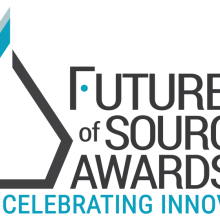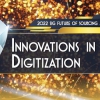How were things done originally and what was the inspiration to innovate the process?
The supply chain sector is notorious for hiring challenges and high turnover. Orientation workshops in warehouses and logistics centers happen almost daily and companies struggle to keep up with the cycle of new hires – many of which walk out the door 60 – 90 days later.
To accommodate the constant need to hire, many businesses use third-party temp agencies to source talent – but it’s an expensive and inefficient method to rely on. Some new hires cost the company twice as much than if sourced directly. Plus, these hires – as the name insinuates – are temporary. The quality of a worker who goes to a temp agency to be assigned out for the day is lower on average than a worker who is looking for their next long-term career step. This requires a greater monetary investment (and more time) for training employees — as well as decreased productivity and lower team morale.
Businesses also leverage online job boards to hire – but this can be ineffective and time-consuming as well. It can take a business month to find the right applicant – holding hundreds of interviews with folks who aren’t a good fit.
In terms of retention, most businesses have no strategy in place. Supply chain roles are infamous for long hours, tough working conditions and isolated shifts. Management struggles to connect with employees one-on-one when teams are large and scattered across regions. As a result, if a worker is struggling, leadership is often in the dark and retention suffers.
WorkStep’s HIRE solution was created so workers could be easily and quickly matched to job postings that fit their specific interests and skills. Both applicants and workplaces have more power over who or what is a match and can skip meaningless interviews that lead to little return. It’s fast, effective and cost-efficient – unlike tempt agencies or job boards.
Once the right candidate is hired, WorkStep’s RETAIN enables businesses to continuously collect their anonymous feedback on pain points, challenges and goals. Management is then able to drive change, create a better employee experience and ultimately, boost retention. RETAIN also alerts managers when it’s time to check in with an employee at certain milestones. This creates better communication and engagement that leads to higher productivity and satisfaction.
What KPIs did you use to measure success for this project? (For example: performance, customer satisfaction, revenue, sales or relevant financial gains?)
Based on customer data, RETAIN has helped supply chain companies decrease their employee turnover by up to 36%. Its retention-based payment model is a testament to its commitment to long-term hires.
After implementing RETAIN, NFI, a major logistics company, saw a 36% decrease in new hire turnover in the first month of employment, an 18% decrease in overall turnover and a 2% increase in new hire satisfaction. Thanks to WorkStep, the company has streamlined HR processes, and now has the time and data available to invest in other initiatives. RETAIN also allowed Pepsi, the major beverage distributor, to decrease new hire turnover by 29%.
WorkStep goes beyond retention as well. For example, its solution HIRE was used by grocery giant Kroger, which saw 10 direct hires placed per facility after implementation. Over time, Kroger experienced two times as many on-site interviews and began sourcing 100% of its non-exempt roles through WorkStep. After seeing the value of WorkStep, Kroger expanded its technology to distribution centers in additional regions, as well as its dairy and bakery manufacturing facilities. This solution was also implemented by WestRock, an American corrugated packaging company, and helped the company retain 82% of new workers hired using HIRE.
Last year, HIRE facilitated over 600,000 supply chain job applications and crossed the 1 million user mark.
What advice do you have for those who may want to implement this innovative approach in their own organizations?
My advice to companies looking to reduce turnover is to stop making assumptions about their workforce. Management assumes people quit solely because of pay and scheduling. By implementing RETAIN, they're able to see that isn't usually the case. In fact, our data finds that lack of career growth is the #1 reason for turnover quarter after quarter. With this insight, management can drive change where it will actually make a difference – such as holding more opportunities for professional development.
Most importantly, however, companies must act on the feedback collected through surveys. A recent WorkStep survey showed that upwards of 70% of workers feel like management isn’t listening. Collecting data is only the first step. Action is absolutely critical.
What factors do you think are the most important to consider when innovating supplier performance?
The biggest thing I’ve learned from our RETAIN data is that hourly workers aren’t just looking for jobs – they want meaningful careers. They prioritize professional development, opportunities for growth, and personalized career paths. A simple pay raise isn’t enough to make them stay.
There’s a stigma that warehouse workers, truck drivers, and other supply chain employees are looking to clock in, clock out, cash their check and go home. That’s not the case – and making those assumptions are dangerous to the health of your organization. To improve retention, businesses need to get to the real root of turnover. The only way to do so is to ask employees themselves.







